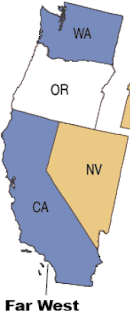Long-Term Care Hospitals (LTCHs) provide hospital care to individuals with complex medical conditions that require longer duration (in excess of 25 days on average) inpatient care. LTCHs are important components of the hospital infrastructure that serves the needs of over 62 million Americans with Medicare Part A long-term care coverage. As of the calendar year 2020, there were 347 LTCHs, with over 23,700 beds, participating in the Medicare program.
In the calendar year 2020, the seven-state Great Plains region of the U.S. was home to 22 LTCHs, with 1,185 beds, that participated in the Medicare program. The region was, generally speaking, under-served by long-term care hospital beds as its share (6.6%) of the Medicare Part A enrollment population exceeded its share (5.0%) of Medicare LTCH bed capacity by a wide margin. Here is a closer examination of Medicare long-term care hospital beds in the Great Plains region:
 |
Medicare Long-Term Care Hospital Beds in the Great Plains Region |
| Area | # Part A Enrollees | # Hospitals | # Beds | ||
|---|---|---|---|---|---|
| IA | 637,145 | 2 | 80 | ||
| KS | 545,607 | 3 | 144 | ||
| MN | 1,045,280 | 2 | 346 | ||
| MO | 1,246,928 | 8 | 315 | ||
| NE | 353,434 | 4 | 204 | ||
| ND | 133,840 | 2 | 72 | ||
| SD | 180,149 | 1 | 24 | ||
| Region | 4,142,384 | 22 | 1,185 | ||
| National* | 62,498,751 | 347 | 23,748 | ||
| % of National | 6.6% | 6.3% | 5.0% | ||
* National totals include U.S. territories
Data Source: CMS Program Statistics, Table: MDCR PROVIDERS 4. Medicare Providers: Number of Medicare Certified Hospitals and Skilled Nursing Facilities, and Number of Beds, by State, Territories, Possessions, and Other, the Calendar Year 2020






